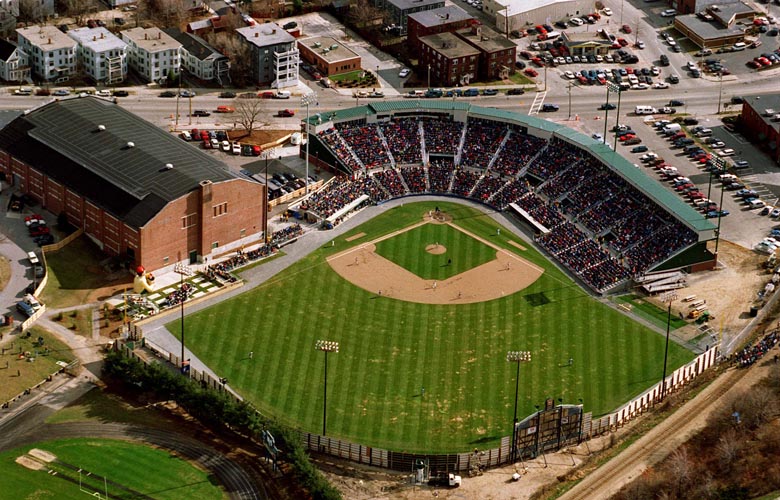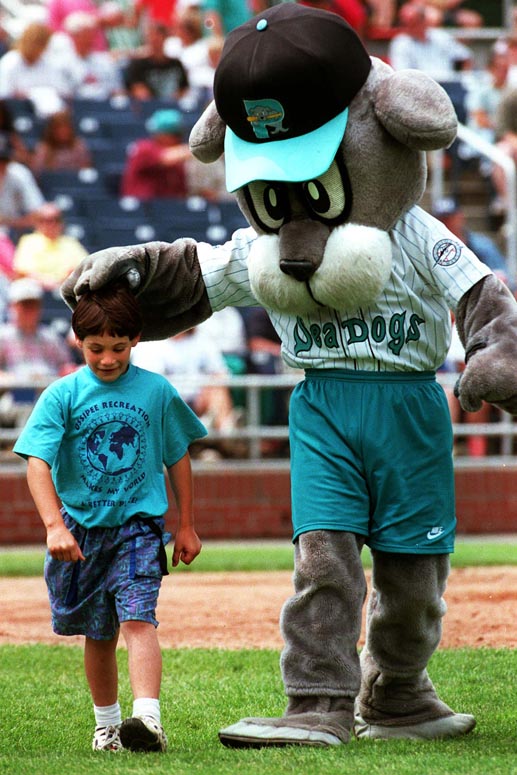Annette Funicello, an original Mouseketeer who died April 8, was 17 when she dated Paul Anka. She inspired his hit song, Puppy Love.
Oh, I guess they’ll never know
How a young heart really feels
In 1994, the year the Sea Dogs arrived in Portland, people knew exactly how a young heart feels.
A city bereft of professional baseball for 45 years embraced the young pups. They weren’t very good – not at first – but they exuded hope and determination and the promise of better days.
Their affiliation was with the nascent Florida Marlins, a franchise that had started play only a year earlier, and was far enough away that it may as well have been Saskatoon.
That distance, both geographically and emotionally, meant the Sea Dogs belonged to us. Sure, it’s all well and good that the Dogs are now affiliated with the Red Sox, and alumni can be seen at Fenway or on cable television. It’s a nice connection, beneficial to both sides, but it also makes Portland something of a Boston satellite, a junior partner.
When the Sea Dogs wore teal and black, they were nobody’s business but our own.
The first year’s group included one bona fide prospect – catcher Charles Johnson – amid a collection of castoffs and spare parts from other organizations. You can find the names on Page 12. A few lasted several seasons in the big leagues – Vic Darensbourg, Marc Valdes – but most did not.
It was Johnson’s 14th inning home run that won their inaugural game, on a frigid night in Reading, Pa. The Sea Dogs won two more before stumbling through a 10-game losing streak that included their Hadlock opener, an action-packed 7-6 loss that ended with a Greg O’Halloran bases-loaded drive to center being hauled in by a running, tumbling Jason Robertson, who would later play for the ’96 Sea Dogs.
A retractable lighthouse rose above the center-field fence after every Sea Dogs home run and victory. They won 60 games – one more than last-place New Britain (then a Red Sox affiliate) in the Eastern League’s Northern Division. Even so, Johnson won the EL home run title and Sea Dogs fans – talk about being smitten – surpassed the league attendance record by more than 50,000.
In 1995, as more prospects arrived courtesy of the architects behind the productive Montreal Expos farm system – General Manager David Dombrowski and minor league director John Boles – the Sea Dogs started winning with regularity. They wound up 30 games over .500 to finish atop the EL North for the first of three straight seasons. The infield of Lou Lucca at third, Edgar Renteria at short and Ralph Milliard at second was as good as any that followed.
Baseball wasn’t the sole attraction. The pride of the litter, for an outfit built with family entertainment in mind, was and still is Slugger. Yes, the furry mascot who first appeared in May of ’94 played a leading role in the romance of team and town.
Slugger could have been lame – and actually was, briefly, when good-naturedly mocking an opposing manager who had torn his hamstring the previous day while racing out of the dugout to argue a call – but he wasn’t. A collegiate gymnast (and now a Portland lawyer who still enjoys his anonymity) made sure the original Slugger always had a hop in his step, a twinkle in his eye and mischief in his mind.
He went to mascot camp. He studied from the Phillie Phanatic. He developed routines and used stooges, never so effectively as with his scheme to coerce a seemingly-unsuspecting vendor into dancing atop the visiting dugout so his bag full of ice-cream biscuits could be plundered and dispersed to the delighted crowd.
All that was lacking from the first two seasons was an opportunity to express our affection.
In ’94, with the major leagues on strike, ESPN’s Jon Miller, Jim Kaat and Peter Gammons came to Hadlock to televise the regular-season finale (yes, Sea Dogs owner Dan Burke’s ties with ESPN’s parent company greased the skids for that one), but a drenching rainstorm washed it out. In the ’95 playoffs, the second-place New Haven Ravens eliminated the Sea Dogs in Connecticut.
In ’96, the Sea Dogs didn’t have the same star power, but they had a scrappy bunch led by third-year manager Carlos Tosca. They survived the midseason call-ups of second baseman Luis Castillo and hitting coach Jeff Pentland (opening the door for Portland native Ken Joyce’s professional odyssey from Sea Dogs volunteer bullpen catcher to the doorstep of a big-league job) and reached the league championship series.
When it became clear a Harrisburg Senators club featuring Vladimir Guerrero, Brad Fullmer and Jose Vidro would clinch the title in Game 4 at Hadlock, Sea Dogs fans finally had their chance to bid a proper adieu. An ovation started with the last out in the top of the ninth.
Rising, waning slightly, then gaining in strength and emotion, the outpouring of cheers and applause took on a life of its own. It would reach a crescendo, pause, then climb even higher as the Sea Dogs went quickly in the ninth.
“If they didn’t have a score on the scoreboard,” said Portland outfield Pookie Wilson, “you could have sworn we were winning.”
Nearly 17 years later, the purity of that night’s emotion remains fresh, as does the vision of Tosca concluding the postgame interview as shouts and cigar smoke and the smell of champagne drifted through the double doors separating the quiet home clubhouse from that of the boisterous visitors.
Here’s what these fingers tapped out that night:
“One more thing,” Tosca said, and paused. “One of the most memorable moments in my life was in the ninth when those people were clapping out there.”
He leaned forward, elbows on knees.
“I want to thank them.”
He rubbed his hands and swallowed hard.
“Those are fans.”
His eyes glistened.
“This place is special.”
Full confession: As he spoke, his eyes weren’t the only ones glistening.
Puppy Love. Nothing compares.
Glenn Jordan can be contacted at 791-6425 or at:
gjordan@pressherald.com
Twitter: GlennJordanPPH
Send questions/comments to the editors.




